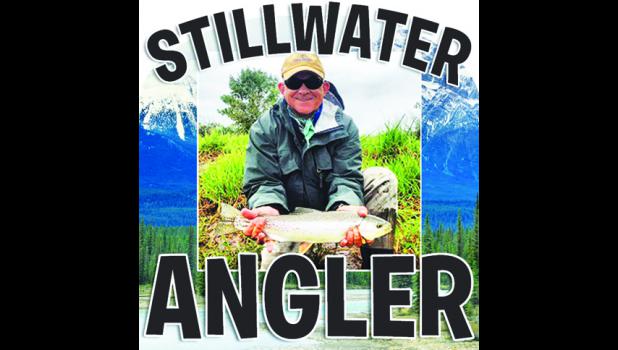Stillwater Anger Fishing Report
A couple of mornings this past week gave us a quick reminder that a change in the season is coming and fall will soon be here. It’s my personal favorite time of the year to be fishing our area rivers and streams. While I usually write about some sort of fly fishing related topic, for my column this week, I thought I’d give a brief fishing report for the Stillwater and Yellowstone instead. I receive a lot of inquiries on any given day as to what’s going out there, so here’s the latest scoop!
On the Stillwater, flows actually bumped up a bit and are holding steady in the 500-550 cubic feet per second (cfs) range. This makes the lower river still floatable. Another bit of good news is that the colder nights and mornings have dropped the water temperature significantly. It’s been dropping well into the lower 50s and is only getting up to 60 or maybe slightly above during the heat of the day. This is a much healthier situation for the fish.
So first of all, I would say that there’s no real hurry to get out on the water. If you do, with it this cold, nymphing is probably the way to go. Once it warms up a bit later in the morning, try the big dry/hopper and dropper nymph set up. For dropper nymphs, I recommend using the standard beadhead nymphs like a hare’s ear, copper john, pheasant tail, prince, batman or lightning bug.
A long dropper is usually effective and gets the fly down in the water column to where it needs to be. In windy conditions, either shorten it up or cut it off entirely. For a big dry/hopper, a PMX in a variety of body colors, Jack Cabe, stimulator, Fat Frank, Yellowstoner Chubby or Chubby Chernobyl, also in a variety of body colors will do the trick.
Hopper fishing has been fairly active, as fish have been looking up, so don’t hesitate to experiment with hopper patterns. I usually use size 10-12 on the Stillwater. A parachute adams or purple haze have also been taking fish even with no apparent activity, so don’t hesitate to use one of them to search likely holding water.
If it’s hard to pick up out on the water, try dropping a size 14-16 off of the back of a bigger, more visible dry fly. Straight nymphing has been good too, particularly early in the day when the water is cold. Be advised that the Stillwater River Road remains closed to through traffic due to a rock slide above Cliff Swallow in the vicinity of the Midnight Canyon bridge.
This is a great time to float the Yellowstone. Lower flows have exposed shelves and other features, creating excellent holding water. The drop in water temperature has allowed the fish to move into all areas of the river. The hopper bite has really come on lately and has been good, particularly once the day warms up by late morning or early afternoon.
As with the Stillwater, there’s no real hurry to get out on the water. It’s usually best to straight nymph first thing in the day, or maybe even streamer fish, particularly on overcast or poor weather days.
Nymph using both a short setup in shallow water and a longer rig in deeper water. Girdle bugs or pepperoni yuk bugs on a long dropper with a smaller beadhead nymph like a prince, hares ear or pheasant tail trailed off of it have been productive. On most days there have been some tricos on the water. This is an extremely small mayfly that is very difficult for most of us to fish. Nonetheless, it’s hard to not at least attempt to fish to rising fish. A small pattern with the right presentation always may get an eat.
For big dry/dropper time, try the usual suspects like a Chubby Chernobyl, Yellowstoner Chubby, Yeti Hopper, Sheila Hopper, PMX or Fat Frank as a top fly along with a beadhead nymph dropper. Peach, pink, purple and tan have been a good body color for hoppers. Sizes 8-12 have been successful depending on the color and pattern.
For best results, use a long dropper. Another tactic that has been taking fish, particularly in nervous water, is to trail an ant, beetle, small hopper, or small dry fly off of a hopper on a short piece of tippet. As with the Stillwater, a smallish dry fly pattern like a purple haze can be fished as a searching fly in likely water, even with no actively feeding fish and still produce.
I look for excellent conditions to stay with us well into the fall. In addition to the hoppers, we’ll start to see some of our fall hatches coming on soon which always makes for some fun dry fly action. Although the water temperature on all rivers and streams has dropped back down to a more comfortable and healthy level, it’s still important to play fish promptly and minimize their handling. Tight lines!
Chris Fleck owns and operates Stillwater Anglers Fly Shop and Outfitters in Columbus.

